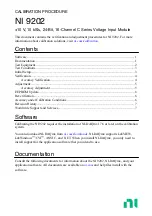
MPCQ Platinum Installation and Operation Manual
5
Set Point Operation Concept
The MPCQ Platinum can sequence stages using different logics. The PID Logic is primarily used to save energy on building heat. The
OSS is used in application where fast response and pressure accuracy are the key factors.
PID Operation
(Available in Set Point Operating Mode)
PID control logic is primarily used for building set point heating. The logic will utilize two primary adjustable settings to add or subtract
stages. The Reaction Time is used to turn on/energize stages. On the other hand, the Minimum Runtime is used to turn off/de-energize
stages. On a call for heat and when the outdoor temperature is below the Outdoor Cutoff, the MPCQ Platinum will turn on/energize the
lead boiler’s lowest firing stage to start the Purge Delay. After the elapse of the purge period, the MPCQ Platinum will start calculating
the Reaction Time. If after a full Reaction Time the control logic foresees additional stages are needed, the MPCQ Platinum will energize
the following stage. If that stage was another boiler, that boiler has to go through a full Purge Delay before starting to calculate the
Reaction Time for that stage. Otherwise, if the next stage was the higher firing stage on the same boiler, the Reaction Time will start
from the moment the higher firing stage relay is energized.
When the MPCQ Platinum PID logic foresees that the system will overshoot, it will shutdown stages making sure that the last stage turned
on/energized elapsed a full Minimum Runtime before it is turned off/de-energized. No additional stages will be turned off/de-energized
until another full Minimum Runtime is elapsed. On the other hand, the lead stage will remain energized until the system reading exceeds
the Set Point by the Last Stage Hold value in addition to satisfying the Minimum Runtime condition. That is, if the Set Point was 10
PSI and the Last Stage Hold was set to 2 PSI, the lead stage will remain energized until the system reaches 12 PSI and a full Minimum
Runtime elapses. This is useful in protecting the lead stages from short cycling in mild weather conditions.
OSS Operation
(Available in Set Point Operating Mode)
OSS is used in fast reacting application as in process applications, where maintaining a set point is critical. The OSS utilizes the Throttle
setting, as a mean to calculate the number of stages the MPCQ Platinum shall have on at any point. For every Throttle Range below the
set point an additional stage shall be turned on/energized. That is, if the set point was 12 Psi and the Throttle setting was 2 Psi, if the
System dropped below 10 Psi (12 Psi - 2 Psi), the lead stage will energize. With further decrease in the system value to 8 Psi (12 Psi - 2
Psi - 2 Psi), the second stage will energize.
As the system pressure rises towards the set point, stages will turn off. Using the previous example, when the system rise to 10 Psi, boiler
B will de-energize leaving only boiler A on. Boiler A will remain on until the system rises a one full Throttle range above the set point.
This will leave the lead boiler A on until the pressure rises to 14 Psi then turn off/de-energize.
Set Point = 12 Psi
Throttle = 2 Psi
Boilers (A, B, C, D, E, and F) Lead Stage =<A>
Falling Pressure
Rising pressure
System
Pressure
Throttle
Ranges
Stages Turned On
Stages On
Stages Turned Off
Stages On
14 Psi
-1
----
None
A
None
12 Psi
0
----
None
----
A
10 Psi
1
A
A
B
A
8 Psi
2
B
A + B
C
A + B
6 Psi
3
C
A + B +C
D
A + B +C
4 Psi
4
D
A + B +C + D
E
A + B +C + D
2 Psi
5
E
A + B +C + D + E
F
A + B +C + D + E
0 Psi
6
F
A + B +C + D + E + F
----
A + B +C + D + E + F
Setback
(Available in Set Point Operating Mode)
Whenever the MPCQ Platinum is at the Night schedule setting, it follows the Night Cutoff as its outdoor temperature system cutoff.
It will then allow the system pressure to drop by the Setback setting and sequence the stages to hold that pressure for the full night
period. The lower pressure provides the opportunity to save energy in applications where a cycle system does not apply.






































